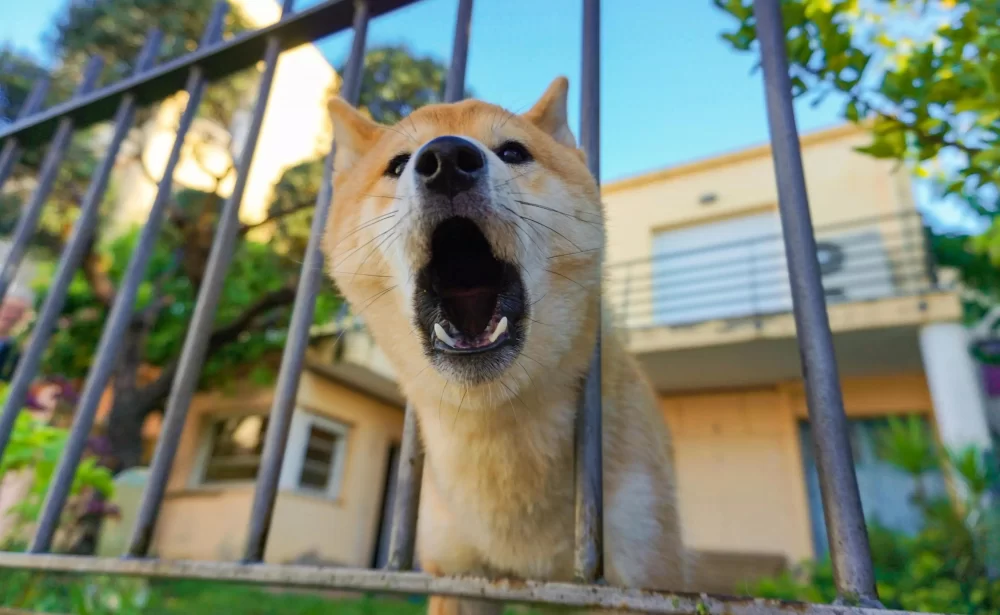Understanding Why Dogs Bark at the Mailman
As a dog owner, one of the most frustrating things you may experience is your dog barking incessantly at the mailman. Trust me, I’ve been there. My dog, Max, a lovable but hyperactive Golden Retriever, used to bark nonstop whenever the mailman came around. It was loud, disruptive, and honestly, a bit embarrassing when I had visitors. But after some trial and error, I was able to train Max to stop barking at the mailman. Now, I can confidently say that it’s possible to help your dog overcome this behavior with some patience, understanding, and consistent training.

1946 S Christopher Columbus Blvd, Philadelphia, PA 19148, USA
See DetailsWhy Do Dogs Bark at the Mailman?
Dogs, like Max, often bark at the mailman for several reasons. For one, they view the mailman as an intruder, someone who comes to the door, and in the dog’s eyes, that person is a potential threat. Barking is a natural protective behavior that dogs use to alert their owners of something unusual. In Max’s case, the mailman’s daily appearance at the same time, combined with the uniform and unfamiliar scent, triggered his instinct to bark as a way to protect our home.
Additionally, dogs tend to bark out of excitement or frustration. Some dogs find it thrilling to see someone come to the door, and the barking can be a way to get attention. In Max’s case, he also loved the excitement of the mailman’s arrival. Over time, this became a habitual response, and I realized that I needed to address it, or it would only escalate.
Step-by-Step Guide to Stop the Barking
After realizing why Max barked at the mailman, I set out to find a solution. I researched training methods, talked to my vet, and even watched online tutorials. Here’s the approach that worked best for us and could work for you too:
1. Set a Consistent Routine
Consistency is key when it comes to dog training, so I made sure to establish a clear routine. I knew that the mailman would come at around 10:30 AM every day, so I used that time to prepare Max for the situation. Every day, I would spend some time reinforcing calm behavior before the mailman’s arrival. I kept a few treats on hand to reward Max when he stayed calm. The goal was to create a positive association with the mailman’s arrival, rather than it becoming a trigger for barking.
2. Teach the “Quiet” Command
One of the most effective tools in my training arsenal was the “quiet” command. This command worked wonders in reducing Max’s barking. To teach this, I would wait until Max started barking at the mailman, and then immediately say “quiet” in a calm but firm voice. As soon as Max stopped barking for a few seconds, I would reward him with a treat and praise. Over time, he learned that staying quiet when I said “quiet” led to a positive outcome. This method helped break the cycle of excessive barking.
3. Use Positive Reinforcement
Positive reinforcement is a powerful technique, and I made sure to use it consistently with Max. Whenever he didn’t bark at the mailman or stayed calm when he saw him, I would reward him with treats, toys, and plenty of praise. Positive reinforcement helped Max understand that good behavior is rewarded, while barking led to no attention or rewards. This shift in behavior helped reduce the barking over time.
4. Counter-Conditioning the Mailman’s Presence
Max’s behavior was not just a habit; it was a learned response to the mailman’s arrival. To counter-condition this, I started pairing the mailman’s visits with something positive. Every time the mailman came, I would give Max a treat and a toy to keep him distracted. I would also make sure to engage with Max by playing fetch or doing a fun activity while the mailman was around. This helped him associate the mailman’s presence with positive experiences, rather than just something to bark at.
5. Create a Safe Space
Another technique I used was to create a safe space for Max when the mailman arrived. I found that Max’s barking would escalate when he had a direct view of the mailman through the window. So, I started placing him in another room when I knew the mailman was coming, away from the door and the window. This minimized his ability to react to the mailman’s presence and reduced his barking. Over time, Max became less interested in the mailman’s arrival, as he wasn’t directly exposed to it.
Understanding the Importance of Patience
Throughout the training process, I learned that patience is crucial. Max didn’t stop barking at the mailman overnight. It took several weeks of consistent training before I started seeing real results. I had to remind myself that change takes time, and that setbacks are part of the process. On the days when Max would start barking again, I didn’t get discouraged. I simply went back to reinforcing the positive behaviors and sticking to the plan.
Consider Hiring a Professional Trainer
If you’re struggling to control your dog’s barking at the mailman, it might be worth considering hiring a professional dog trainer. A trainer can provide personalized guidance and help you tailor your training methods to your dog’s specific needs. In some cases, a trainer can even come to your home and work with your dog in the exact environment where the barking occurs.
Other Factors to Keep in Mind
Max’s barking wasn’t just a random behavior; it was tied to his personality, the environment, and the training methods I used. As you embark on your journey to stop your dog from barking at the mailman, keep in mind that every dog is different. Some dogs may respond faster to training, while others may need more time. Be sure to monitor your dog’s stress levels and adjust your approach if necessary. In some cases, a dog might be barking due to fear, anxiety, or territorial behavior, which may require different training strategies.
Is It Safe to Use Anti-Bark Devices?
Anti-bark devices, such as collars that emit a sound or a mild vibration when the dog barks, can be an option for some owners. However, I personally opted not to use one with Max, as I felt that positive reinforcement worked best for his personality. That said, if you choose to use an anti-bark device, make sure to consult with a professional to ensure it’s the right fit for your dog’s temperament and that it’s used safely.
Conclusion: A Calm and Quiet Home
Training a dog to stop barking at the mailman takes time, but with the right methods, it is entirely possible. Through consistency, positive reinforcement, and a lot of patience, I was able to help Max break the barking habit. Now, when the mailman comes, Max stays calm and doesn’t bark at all. If you’re struggling with a similar issue, know that you can train your dog to stop barking at the mailman, too. With dedication and the right approach, you’ll have a quieter and more peaceful home.










